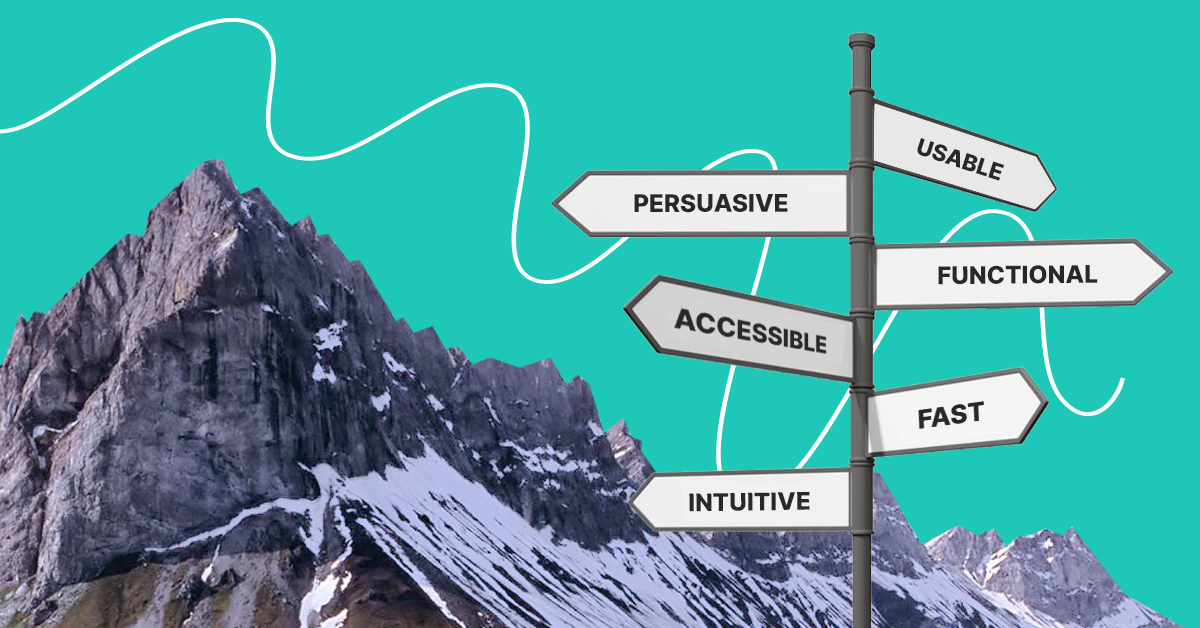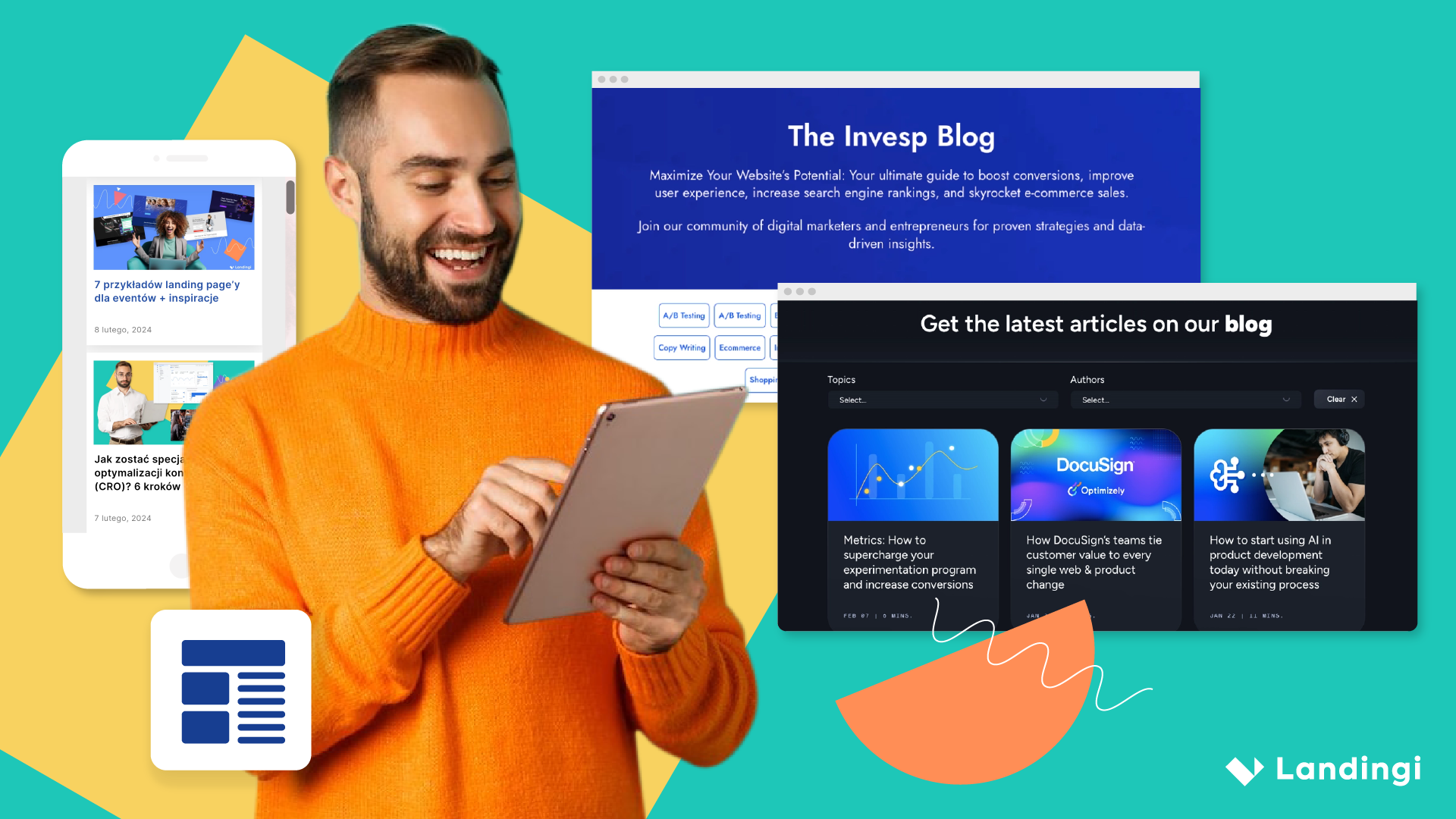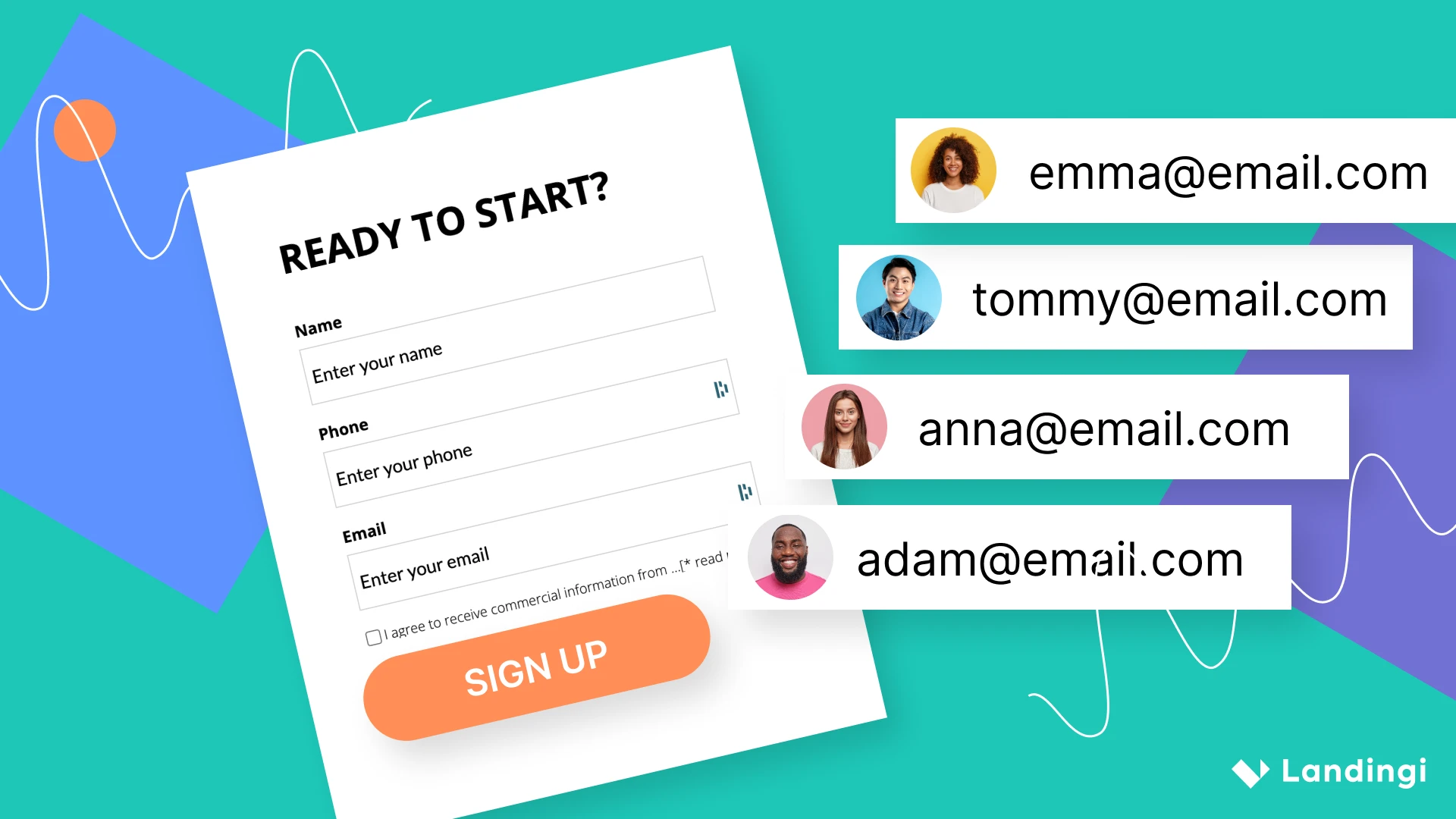Behind the “optimization” term there’s a well-known, natural urge to become better at what we do, to create better things and achieve better results. In search for the right way, we try many different approaches, and there’s nothing wrong with it, as there is no perfect one. In the end, though, you should make a choice and I’ll try to make it a bit easier for you. Let me walk you through the process of landing page optimization in 5 (not so easy) steps.
Planning the route
Optimising landing pages (and all the other webpages as well) is like scaling the challenging mountain – before we embark on such journey, we should learn whatever we can about the trails that lead to the destination point. Knowing what may lie ahead (‘cause there’s no certainty when it comes to both climbing or landing page optimisation), we’ve got far bigger chance to succeed.
There are plenty of… let’s call it optimisation best practices marketers use to enhance their landing pages and get better results. At the bottom of it, there are two mountains pyramids: Abraham Maslow’s and Bryan Eisenberg’s. But what these two have in common with landing pages? Let’s find out!
Getting to the bottom…
The concept of Maslow’s pyramid of needs is well-known, so I won’t be explaining it (if you do want to learn more about it, head over here), but in short: to fulfill more sophisticated needs, one has to take care of the most basic first.

Bryan Eisenberg looked at Maslow’s work, and adapted it to web page optimisation. Time has shown that it did work. Hierarchy of webpage optimisation is divided into five major steps, too. According to Eisenberg, first it should be functional, then accessible, then usable, intuitive and, on the top of it, persuasive. Luckily, we can use this order with landing pages without any adjustments – the differences will be hidden inside.
…and reaching the top
Let’s get to actual walkthrough to a landing page optimisation. We’ll be following the chosen route step by step. Each stage is an opportunity to use particular techniques and learn some tips. Bear in mind, though, that you don’t have to use each – it’s your landing page and only you can determine, which field needs improvement right now, and which works fine for now. Let’s face it – there’s no way to upgrade all aspects of your landing page in one take. It’s a process, and it could be a long one.
Step 1: make a landing page functional
Landing pages won’t bring conversions if they fail to load. Or if they load slowly. Or if videos won’t launch. Or… you get my point, there’s plenty of things that can go wrong all the way to the point that makes a landing page dysfunctional. So the first stop on our way to the peak is reassuring that after clicking that link or button, users will get to see the landing page in all its glory – fast.
The need for speed
You’ve heard all sorts of attention span stories, so I won’t be repeating myself (because I wrote a few words about it here). What’s important is that landing pages have to load fast and work smooth. Question is: how fast is fast enough? According to Google Test My Site feature, an average page load speed is 1 to 2.5 seconds on mobile devices. Desktop users may be more forgiving, but 3 to 4 seconds of page load speed is an absolute maximum, if we don’t want it to hurt our conversions.
Tip #1: check your pagespeed
Use Google Test My Site feature mentioned before to check how fast does your page load on mobile, and GTMetrix for more recommendations.Tip #2: list a few things you want to improve in the beginning
There’s no way you’d make your landing page perfect in one take. Choose a few most urgent aspects you want to focus on in the first place.Tip #3: start with images
One of the most common reasons of poor loading speed is the size of images – compressing them (and/or reducing their number) should be the first thing to check off the list.
Service certainty
If you want your landing page to work miracles for you, it has to be up and running all the time. You never know when a potential customer will visit your landing page – it could be in the middle of the night and you should be ready for it! This is why choosing the proper tool or host is one of the keys to succeed. Landingi is a landing page platform that allows to both create and publish landing pages. We also provide customers with free domains for testing so that they can check every last thing before going live with the campaign.
Step 2: make it accessible
Once your landing page works like a charm, it’s time to make it easy to use. Like searching for an easy slope to climb, users won’t bother with landing pages that seem inaccessible, unless they are very determined to get information from this page (and this page only). What are the most crucial access points and how to improve them?
Tip #1: choose clear and simple design
It’s a general advice, but an important one – a sophisticated design may work for a company’s homepage, but a landing page needs to get straight to the point – users don’t have time for wandering around. Instead of trying to build from point zero, start with professionally-made landing page templates.Tip #2: colors control
The color palette of your landing page matters. Sometimes colors can attract users’ attention, but they may also repel potential customers. Colors are widely used to trigger certain emotions, and to fit a specific target audience. Use contrasting shades.
Step into mobile world
To make your landing page truly accessible, you can’t forget about mobile devices. While tablets are currently in retreat, smartphones rule the world. I mean, they really do – 52.2% of all internet traffic in 2018 was generated by smartphones! And it’s still growing! This is why your landing page has to be optimized for mobile devices. No one can afford losing more than a half of potential visitors!
Learn more about Responsive Web Design
Tip #3: check viewports before publishing
Vanishing buttons, misplaced text, graphics covering most part of the screen – these are typical problems of not responsive landing pages. Spare a minute or two to double-check the alignment of all elements on the landing page. See the difference it can make:
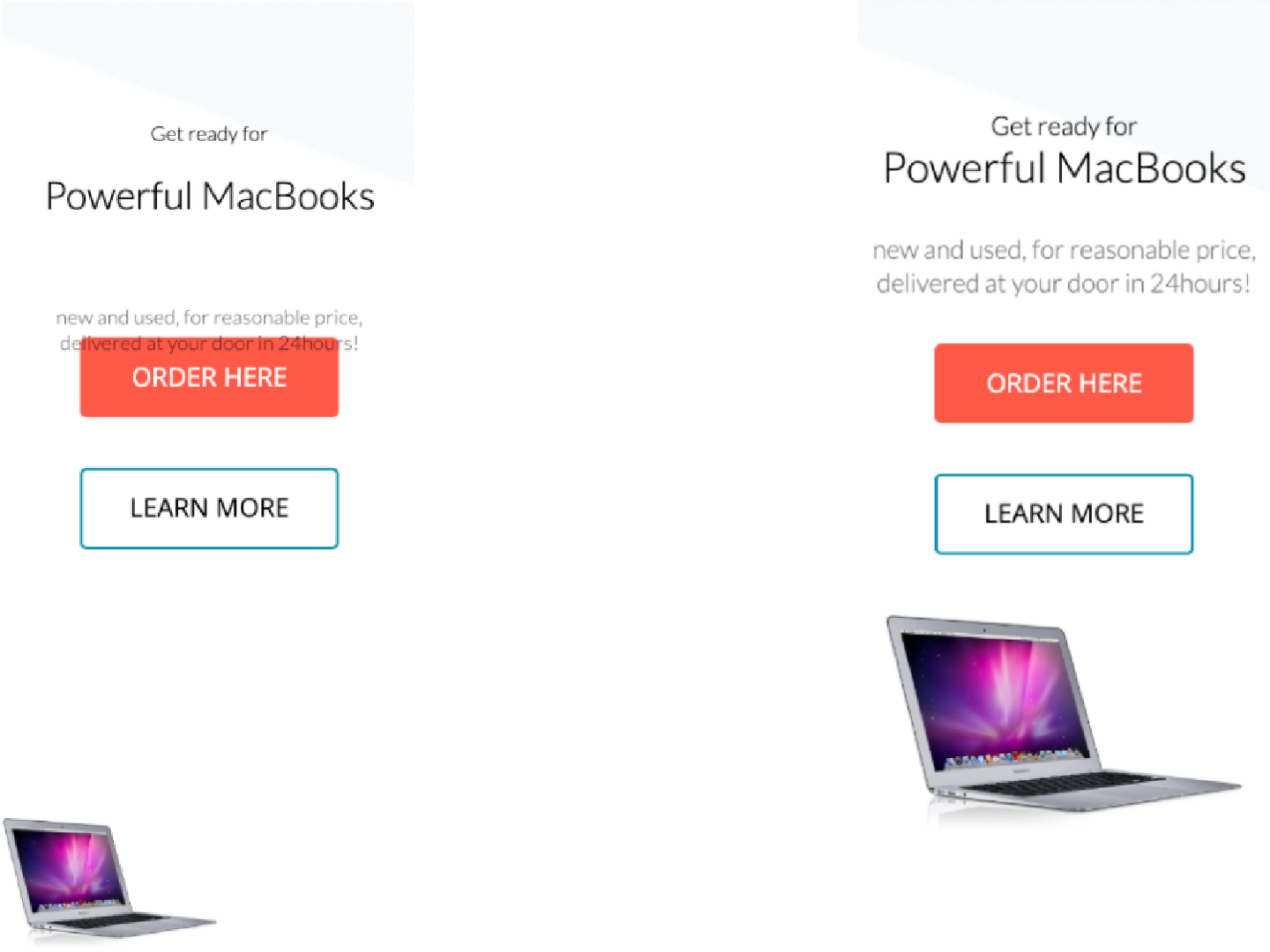
Step 3: make it usable
It’s the middle of the road and one of the crucial moments of climbing – I’d compare it to setting the basecamp. You’re already high enough to start thinking that the end is near. Now it’s time for final preparations before the peak attack – and you can be sure that these preparations are mandatory for the success of the whole expedition. At this point, you’ve got to leave whatever’s not important enough to make your further approach… not so extreme.
This a bit too lengthy comparison is surprisingly close to landing page optimization. The third step is to tear off all the unnecessary elements to make it extremely easy to use and straight-forward.
People tend to decide, if a landing page is worth their attention by having a quick look only. If nothing catches their attention at first sight, they’ll probably move on in search for better one. You’ve got approximately 3-5 seconds to attract them, so…
Tip #1: no more distractions
Make sure there’s only one goal of your landing page. Get rid of navigation, menu or anything like that – it can only make using a landing page more difficult.Tip #2: loud & clear
If the button leads to product page, say it. Fooling around with CTAs can be frustrating for users, who just want to get to the point. Leave nothing to their imagination – the message has to be clear.
Pay attention to the form
Almost every landing page ends with a form. Filling it and hitting the button is usually the last interaction between user and a landing page, but it’s up to you whether it’s going to be the last interaction between him and your company. Conversion should be just a beginning of this relationship.
The more information you collect from the leads, the better for you, but it can seriously hurt the conversion rate of your landing page, so shorten the form as much as you can… but I’m sure you already know that.
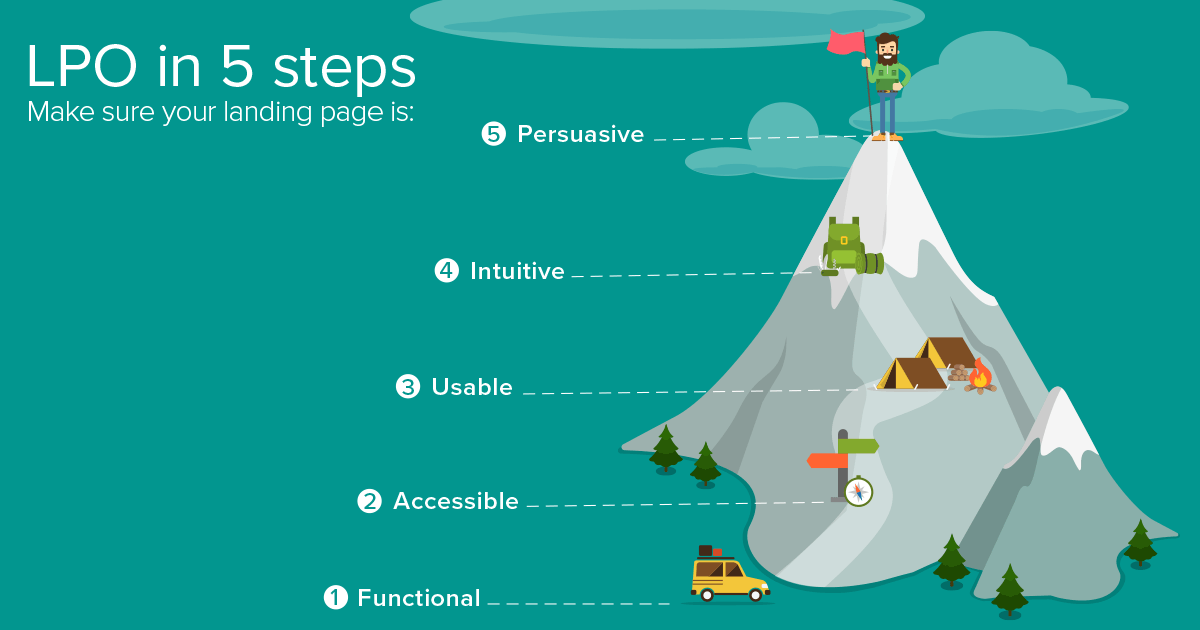
Sometimes a form contains checkboxes. I get the feeling that they are often overlooked as something less important than buttons and type-in fields. The thing is, even those little elements can affect conversions.
Tip #3: edit checkboxes
The more checkboxes you have at the end of the form, the less conversions you’ll get. The same goes with their length and contents. No user wants to read all this, but they have to, as there is lots of bullshit there and agreeing to all of it without reading leads to unpleasant results (like getting tons of unwanted emails).
Step 4: make it intuitive
No one will fall in love with your landing page at first sight, but they may get interested in it, if you play your cards right (see Step 2: making it accessible). It’s time to review your landing page specifically to determine the hierarchy of elements you’ve used on it.
We’re already after the first impression and users are still here – it’s a sign that we have every reason to respect their time, as they decided to trust us with it.
Take a look at your landing page and say which parts of it are worth checking out by your personas. Got it? Now cut off the rest – if they don’t need it, it shouldn’t be on page. Then see what’s left and make use of those tips:
Tip #1: send a clear message
If you flub this one, it’ll be the last thing users will read on your landing page. Focus on saying something interesting, yet relevant and give a reason to read on. Then it’s time for CTA. Make it (literally) outstanding and relevant. Say a word about it, if you need, but don’t go too far – people get bored faster than you think.Tip #2: avoid stock images and videos at all costs
Illustrate the product, event, service, or whatever is the core of your landing page, but with high quality resources. If you want the offer to look professional, be professional.
The real question, when it comes to intuitivity, is: will the visitors find your landing page easy to go through? Are sections connected with each other logically? Is CTA saying what it’s supposed to say? Once you answer all those questions with “yes” (“no” shouldn’t even be taken into consideration) there’s still one last thing: a form.
Every decent landing page ends with a form (or a button leading to next step of the funnel). There’s nothing more important than great finish, because it is the very moment, when people will decide, if they will go further (leave the lead, sign up for an event, download a file etc.), and your form may convince them to take an action, or repel them for good.
Step 5: make it persuasive
We’re nearly at the top, the cold wind blows wildly and we can almost see the top. Almost, because it’s still hidden behind the curtain of raging blizzard. Paradoxically, it’s not so hard to get lost near the summit and lose one’s chance to fulfill the achievement.
Back to landing pages – even with previous steps covered, the outcome isn’t certain. What’s left to take care of, is creating contents that will make people read with interest, click with curiosity and finally fill the form without hesitation. I didn’t say it will be easy!
Say, your company wants to start producing a toothbrush. But not an ordinary one. It’s super eco, 100% disposable bamboo toothbrushing device. With replaceable head. How to persuade people that this is the droid toothbrush they’ve been looking for?
Tip#1: value proposition
Is the product unique, revolutionary, or both? Of course it is. Now prove it. After all, it’s your job. Whole landing page should show how good is your client’s toothbrush, and what makes it different than all the other eco-bamboo novelties. That’s the key. No one wants to pay extra for standard toothbrush, but going an extra mile may provide you with happy customers. If there’s already a toothbrush just like yours, add some value with personalization.Tip#2: straight to the point
Say what you want to say. Don’t hide the real purpose of a page under metaphors, leave clickbaits to silly tabloids. Remember that people land on your page, because they clicked an ad or a link that led them here. They’re here for a reason and your job is to keep their engagement. Present the offer and don’t leave any space for figuring out what you had in mind.Tip#3: images and words
if headline worked, then the visitors should have a chance to actually see what are you talking about. Show the product, or – if it’s an event – include short footage of what it was like in previous years, or pictures of the speakers.
Images do speak louder than words, but they don’t necessarily speak better.
Showing the product (e.g. in MVP phase) uncovers part of the secret, and leaves it to people’s judgement. Not everything will pass the test. I’m sure you’ve heard of MVPs that turned out to be a total disaster. Showing the “product-not-yet-ready” phase is always a leap of faith (without knowing, if there’s a (ridiculous) heap of hay below, or just a cobbled road).
Coming down to earth
Standing on the top of the mountain feels unbelievably great, but the moment in which you have to turn back and return, is inevitable. Once it comes, and you head back in your own footsteps, you can see all your past mistakes. Ok, enough of these cascading metaphors. Landing pages are more forgiving than mountains – almost every fail can be fixed, and if found early, may not even cause any loses.
What I encourage you to, is to analyze each step of optimisation once you release a landing page. Some mistakes you can spot right after the page goes live (typical), but some of them can be found only after a while – and these are the trickiest.
